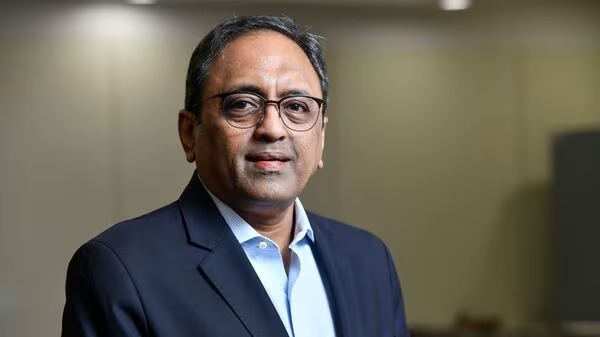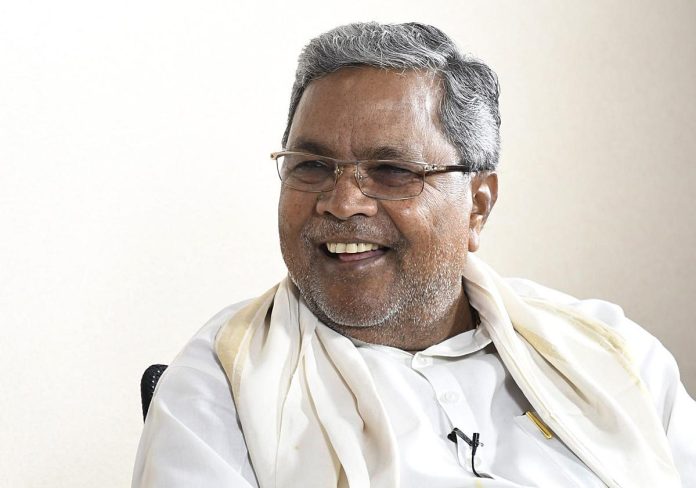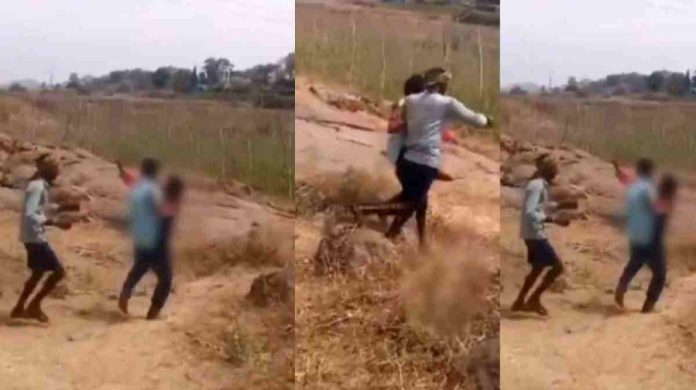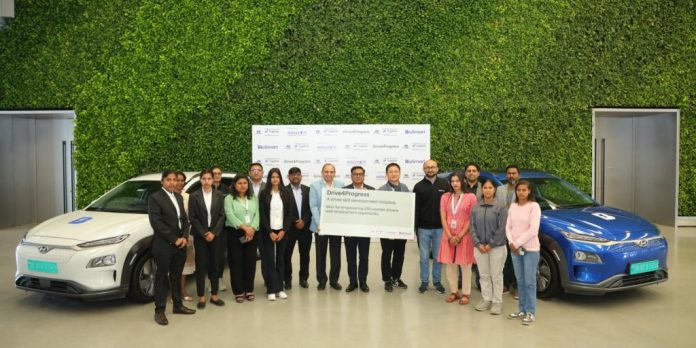Karnataka Budget 2025-26 Announced: Key Highlights
Karnataka Chief Minister Siddaramaiah presented the 16th Budget of the state on Friday, with a total outlay of Rs 4.095 lakh crore.
The Karnataka Budget allocated Rs 51,034 crore for the five guarantee schemes promised by the Congress government in the state. Following are the key highlights of the Karnataka Budget 2025-26:
– An amount of Rs 82,000 crore is allocated for for capital investment. This makes Karnataka one of the highest capital investment making states.
– A 4 per cent reservation for members of Muslim community has been introduced in government tenders and contracts.
– Grants worth Rs 100 crore has been earmarked for the comprehensive development of Jain, Buddhist and Sikh communities. In addition Rs 250 crore has been allocated for the development of Christian community. And a Sannati Development Authority will be established in the ancient Buddhist centre of Sannati in Chittapura taluka of Kalaburgi district.
– Annual salary of temple priests will be increased from Rs 60,000 to Rs 72,000. The honorarium given to Jain priests, Chief Grantis of Sikhs and Pesh-Imams of mosques will be enhanced to Rs 6,000 per month. The honorarium given to Assistant Granti and Muezzin has been increased to Rs 5,000 per month.
– The government has also announced construction of an additional building in Haj Bhavan at Bengaluru to provide with facilities and amenities to Haj pilgrims and their relatives.
– The government of Karnataka has committed to float a new OTT to help develop Kannada language programmes.
– The Budget allocated Rs 94,084 crore for women-centric programmes.
– For children-centric programmes, Rs 62,033 crore has been provided. Furthermore, National Foreign Student Scholarship amount given to the minority students will be enhanced from Rs 20 lakh to Rs 30 lakh.
– Minority youth will be encouraged to launch new start-ups through the Karnataka Minority Development Corporation. Rs 150 crores has been provided for repairing and renovating Waqf properties, providing infrastructure, and protecting Muslim burial grounds.
– CM Siddaramaiah announced that multiplexes across Karnataka will now have a maximum ticket price cap of Rs 200. “The cost of the ticket of each show in all theatres of the state including multiplexes will be capped at Rs 200,” the Budget document stated.
– Monthly pension for journalists facing hardship will be increased from Rs 12,000 to Rs 15,000 and family pension from Rs 6,000 to Rs 7,500.
Bengaluru
– The budget allocation for Bengaluru is increased to Rs 7,000 crore. A total of Rs 1,800 crore has been earmarked for 21 projects under the Brand Bengaluru initiative.
– A ‘Comprehensive Health Programme’ will be implemented over the next three years under Brand Bengaluru Plan at a cost of Rs 413 crore with the goal of making Bengaluru a city of global health standards.
– A 40.5 km double decker flyover will be constructed at a cost of Rs 8,916 crore along with Namma Metro Phase – 3 Project to mitigate vehicular congestion and intended to make major roads of Bengaluru ensure smooth movement of traffic.
– A network of 300 km additional roads will be constructed at a cost of Rs 3,000 crore, utilising canal buffer zones.
– The arterial and sub-arterial road network in BBMP area measuring 460 km will also be developed at a cost of Rs 660 crore.
– Flyovers and Grade Separators of length 120 km will be built in the Bengaluru city.
– Rs 3,000 crore was allocated to address weather-related challenges and enhance the city’s drainage and sewage treatment infrastructure.
– Another Rs 555 crore was allocated for the fifth phase of the Cauvery water supply project, which aims to provide drinking water to 110 villages.
– The Bengaluru Metro network will also be expanded to 98.60 km, with improved connectivity to Devanahalli.
– 200-bed hospital will be constructed at a cost of Rs 150 crore in Bengaluru North.
– A new satellite market will be established in the outskirts of Bengaluru in view of the increasing vehicular congestion in the market committees in Bengaluru.
– Bangalore City University will be renamed as Dr. Manmohan Singh Bengaluru City University.
Mumbai में अभिनेता निशांत त्रिपाठी ने की आत्महत्या, पत्नी पर लगाया आरोप
Mumbai के होटल में युवक ने किया Suicide , पत्नी पर लगाया प्रताड़ना का आरोप! पुलिस ने मृतक Nishant Tripathi
Mumbai Suicide Case: Nishaant Tripathi
अतुल सुभाष की तरह 41 वर्षीय अभिनेता निशांत त्रिपाठी (Nishant Tripathi) ने अपनी पत्नी पर उत्पीड़न का आरोप लगाकर सुसाइड कर लिया। निशांत त्रिपाठी का शव मुंबई के विले पार्ले स्थित एक होटल में फांसी के फंदे पर लटका हुआ मिला है। निशांत ने अपनी कंपनी की Website पर लिखे अपने सुसाइड नोट में अपनी पत्नी Apurva Parikh और उसकी मौसी को आत्महत्या का जिम्मेदार बताया। पालघर के रहने वाले Nishant Tripathi 3 दिन पहले Mumbai के विले पार्ले के एक नामचीन होटल में आकर रुके थे। 28 फरवरी को उन्होंने होटल के अपने कमरे में फांसी लगाकर Suicide कर लिया।
जब तक तुम यह पढ़ोगी, मैं जा चुका होऊंगा
Nishant Tripathi ने एक सुसाइड नोट छोड़ा है। इसमें पत्नी के नाम भावुक लाइनें लिखी हैं। Nishant ने लिखा है,” जब तक तुम ये पढ़ोगी,मैं इस दुनिया से जा चुका होऊंगा। अपने आखिरी लम्हों में मैं तुमसे नफरत कर सकता था, लेकिन मैं ऐसा नहीं कर रहा हूं। मैंने तुमसे वादा किया था कि मेरा प्यार कभी कम नहीं होगा।” निशांत की मां नीलम चतुर्वेदी (64), जो एक सामाजिक कार्यकर्ता हैं, ने पुलिस में शिकायत दर्ज कराई है। जांच अधिकारियों ने बताया कि 28 फरवरी को निशांत का शव होटल के कमरा नंबर 4023 में फांसी के फंदे से लटका हुआ मिला। एयरपोर्ट पुलिस ने ADR दर्ज किया है। निशांत के शव का पोस्टमॉर्टम करने के बाद सांताक्रुज़ श्मशान भूमि में उसका अंतिम संस्कार किया गया।
सुसाइड नोट में पत्नी-मौसी का जिक्र
पुलिस ने बताया कि जांच के दौरान निशांत के मोबाइल में एक सुसाइड नोट मिला, जिसमें पत्नी अपूर्वा पारिक और प्रार्थना मिश्रा (मौसी) को इसने अपनी मौत के लिए जिम्मेदार बताया। साथ ही, अंग्रेजी में लिखे संदेश में लिखा था,”मेरी मां जानती है कि जिन हालात से मैं गुजरा, उनमें तुम और प्रार्थना मौसी भी ज़िम्मेदार हो। कृपया अब उन्हें परेशान मत करना, वह पहले ही टूट चुकी हैं।” नीलम चतुर्वेदी की शिकायत और सुसाइड नोट के आधार पर पुलिस ने निशांत की पत्नी अपूर्वा पारिक और मौसी प्रार्थना मिश्रा के खिलाफ BNS की धारा 108 के तहत केस दर्ज कर घटना की जांच शुरू कर दी है। पुलिस यह जांच कर रही है कि क्या निशांत मानसिक तनाव में था, या उसे सच में किसी तरह की प्रताड़ना का सामना करना पड़ा था। हालांकि, पत्नी और मौसी को नोटिस जारी कर दोनों से पुलिस पूछताछ करने वाली है। इस मामले में किसी की गिरफ्तारी फिलहाल नहीं हुई है।
Atul Subhash, Manav Sharma, और अब Nishant Tripathi
बेंगलुरु में Atul Subhash और हाल ही में Manav Sharma के Suicide के बाद मुंबई में भी इसी तरह की घटना सामने आई है। दिसंबर 2024 में बेंगलुरु में एक AI इंजीनियर की आत्महत्या ने पूरे देश को सकते में डाल दिया । मूल रूप से यूपी के रहने वाले 34 साल के अतुल सुभाष ने अपनी पत्नी निकिता सिंघानिया और सास निशा सिंघानिया पर पैसों के लिए प्रताड़ित करने का आरोप लगाकर आत्महत्या कर ली। यही नहीं, उन्होंने फैमिली कोर्ट की जज पर भी गंभीर सवाल उठाए हैं। उन्होंने करीब डेढ़ घंटे का वीडियो और 24 पेज का खत लिखकर कहा कि और कोई उपाय नहीं बचा है. अतुल का शव उनके फ्लैट से मिला. उन्होंने अपने वीडियो मैसेज में X (Twitter) के मालिक Elon Musk और अमेरिका के प्रेसिडेंट Donald Trump को भी टैग किया। कमरे में Justice is Due लिखी एक तख्ती भी मिली थी।
Agra की डिफेंस कालोनी में टाटा कंसल्टेंसी सर्विसेज ((TCS) के मैनेजर मानव शर्मा ने शादी के एक वर्ष बाद ही पत्नी के उत्पीड़न से तंग होकर जान दे दी। 24 फरवरी की सुबह 5 बजे घर में फंदा लगाकर उन्होंने आत्महत्या कर ली। उन्होंने गले में फंदा कसकर रोते हुए 6.57 मिनट का वीडियो बनाया जिसमें पत्नी और ससुराल वालों पर मानसिक प्रताड़ना का आरोप लगाया। वीडियो में अपने परिवार से माफ़ी मांगते हुए उन्होंने अपने parents को परेशान ना करने की विनती भी की।
पुरुषों की मानसिक सुरक्षा को लेकर उठे सवाल
मानव शर्मा ने अपने वीडियो में कहा कि देश में पुरुषों की मानसिक सुरक्षा के लिए कोई कानून नहीं है। उनकी इस बात ने एक नई बहस को जन्म दे दिया है। पुरुष प्रधान कहते-कहते इस देश में महिलाओं को कमजोर मानते हुए उनके लिए व्यापक क़ानूनी व्यवस्था की गई है लेकिन कभी पुरुषों के बारे में बात नहीं की गई। दरअसल हम ये मानना ही नहीं चाहते कि पुरुषों को भी कभी किसी प्रकार की शारीरिक या मानसिक मदद की ज़रूरत पड़ सकती है। लेकिन जब हम महिला सशक्तिकरण की बात करते हैं तो पुरुषों के बारे में भी बात होनी चाहिए। तभी इस समाज में Gender Equality संभव है।
Are Online Savings Accounts as Secure as Traditional Ones?
With the rise of digital banking, many of our regular banking activities can now be done online with minimal paperwork and without standing in line for long hours. While online banking offers unparalleled convenience, a common dilemma remains whether or not to open a Savings Account online.
In this blog, we will explore the security features of online and traditional Savings Accounts to help you choose a safer option.
Understanding Online and Traditional Savings Accounts
Online Savings Accounts
An online Savings Account, whether a regular Savings Account or a zero-balance Savings Account, is a bank account that can be easily accessed and maintained via your bank’s website or app. These accounts offer paperless banking as one of their perks, along with quick transfers, 24/7 assistance and accessibility.
Traditional Savings Account
A traditional Savings Account is an account which requires you to visit a bank branch or account opening and other processes. While it provides you with in-person services, it involves a lot of paperwork and takes up a lot of time.
Key Security Features of Online and Traditional Savings Accounts
| Parameters | Online Banks | Traditional Banks |
| Multi-Factor Authentication | OTPs, fingerprints, passwords, security questions and more | Some banks offer MFA for their mobile banking |
| Account Access Control | Users have 24*7 to access their Savings Accounts and their funds | Requires visiting a branch to block lost funds |
| Physical Document Security | No risk of stolen paperwork | Paper-based records that can get stolen or lost |
| Customer Support | Quick resolution via chat, phone and email | In-person assistance at the branch |
How Secure Are Online Savings Accounts?
Before you open a Savings Account online, let’s take an in-depth look into the security measures commonly used by banks for their digital account holders.
- Multi-Factor Authentication: To keep your data secure, online banks use multiple levels and forms of authentication. This means you will need more than just a strong password to access your information and funds. You can also use a security question, PIN, or ATM card number.
- Encryption: Banks offer end-to-end encryption using efficient encryption software to protect your personal data and online transactions.
- Fraud Monitoring and Prevention: Online banks use AI-driven technologies to identify fraudulent activities and raise alarms to prevent them.
- Automatic sign-out: Most online banks will automatically log out of your account after a certain period of inactivity to prevent your information from getting unconsensually accessed by a third party.
Are Online Savings Accounts Safer?
Both online and offline Savings Accounts have a good security network. However, online banking offers more advanced detection and prevention of fraudulent activities. Features such as encryption, AI fraud detection and real-time alerts can make online Savings Accounts highly secure. However, you, too, as users, need to be on your toes to maintain the security of your accounts.
Tips to Keep Your Online Savings Account Safe
Here’s how you can keep your online Savings Account safe:
- Use strong passwords and change them at regular intervals.
- Enable multi-factor authentication(MFA) for additional security measures.
- Avoid logging into your account using public WiFis
- Monitor your bank statements regularly to spot any unauthorised transactions.
- Report any suspicious activity to your bank immediately.
Conclusion
Online Savings Accounts provide better digital security and fraud detection. If you want to open a Savings Account online, use strong passwords and enable security features, your online banking can be just as secure as traditional banking.
Private US Company Attempting to Land on Moon’s South Pole
A private US company is attempting to land a spacecraft close to the moon’s South pole. The spacecraft will carry scientific instruments, including a hopping robot and the first lunar mobile communication system to the moon. US based Intuitive Machines is working with the US space agency NASA to look for ice and water on the surface of the moon. The spacecraft ‘Athena’ is currently orbiting the moon and will soon attempt to land on the lunar surface, approximately 160 km away from the South pole in an area of the lunar Highlands called ‘Mons Mouton’.
NASA Sends Instruments Privately
The jumping robot on board the spacecraft is called Micro Nova Hopper or Grace. The robot will leave and fly across the lunar surface to reach a large crater under permanent shade from the sun’s rays. It can fly up to hundred metres in altitude and can travel up to 1.2 miles. A camera attached to the robot will take the first images of the interior of the crater. Very low temperature inside the crater can be a conducive space to look for evidence of ice.
The IM-2 mission is also carrying three scientific instruments developed by NASA, which include a drill called Trident that will drill up rocks to reach the surface under the moon to see for evidence of ice. Another instrument is called a mass spectrometer that analyses any gases released inside the crater. Thirdly, a type of antenna developed with Nokia will also be planted on the moon. This antenna uses the same 4G cellular technology as used on earth.
In the longer term, NASA’s goal is to take humans to the lunar surface. The agency also hopes to send astronauts in 2027 with the Artemis program. Experts want to explore options for building settlements and find out if the lunar surface can offer water or ice, which can be used for drinking water, and also can potentially turn into oxygen.
To make this happen, NASA is partnering with a range of private companies that transport spacecraft and instruments to the moon for the US space agency. This method is cheaper than developing and shooting their own space rovers.
CSR Project launched on International Women’s Day to Empower Young Women in STEM
New Delhi, India: As technology advances at an unprecedented pace, the demand for skilled professionals in STEM (Science, Technology, Engineering, and Mathematics) is greater than ever. However, the gender gap in STEM fields remains a pressing challenge, especially for young women from underserved communities in India who lack access to opportunities and support. Recognizing this urgent need, vivo India proudly launches Project ‘vivo KanyaGyaan’, a nationwide initiative dedicated to empowering Indian women for a future in STEM career.
The program goes beyond scholarships, offering mentorship, skill development, and industry exposure to young women from underserved communities. Already impacting 150 women—over 60% from families earning less than ₹1 lakh annually and 15% raised by single parents—the initiative is breaking financial and societal barriers. By fostering first-generation graduates, vivo is transforming women’s lives and shaping a more diverse STEM workforce, driving long-term social progress.
Geetaj Channana, Head of Corporate Strategy, vivo India, said, “Empowering young women in STEM isn’t just an initiative—it’s a necessity for real progress. Through the ‘vivo KanyaGyaan’ initiative, we’re breaking barriers by providing education, mentorship, and opportunities that help them shape their own futures.Our Women’s Day campaign film captures this spirit with the metaphor of ‘carrying their own chairs’—a symbol of determination and self-empowerment. With this, we hope to inspire a larger movement toward empowerment and action in STEM.”
Further amplifying the initiative’s impact, vivo has also launched a digital campaign as part of the campaign. The theme of the campaign highlights the critical need for diverse workforce in STEM, emphasizing that when women are left behind, the country loses nearly half its scientific potential. It envisions a world where women can actualize their dreams and contribute to shaping a brighter future—not just for themselves, but for the nation as a whole. By showcasing the aspirations and struggles of young women in STEM, the campaign reinforces the importance of providing them with the support and opportunities they deserve.
Crafted by FCB India, the campaign film portrays the inspiring journeys of young women hailing from various parts of India undertaking long journeys to their dream colleges and careers, using the powerful metaphor of carrying their own chairs as a symbol of determination. It champions the stories of hardworking bright minds of the country, giving people a glimpse into the challenges they overcame and what they aspire to achieve as they pursue a career in STEM. Set to graduate with placements in some of the most prestigious companies in the country, these women serve as an inspiration to all those who follow.
Ashima Mehra, CEO, FCB India, “When you give a woman the support she needs, there’s absolutely nothing that can stop her from getting what she deserves. ‘vivo KanyaGyaan’ is a testament to just that. A world where women are empowered in STEM is a world where everyone wins. It’s not just about opportunity—it’s about unlocking untapped potential, driving innovation, and solving global challenges. This campaign shows us that when we lift women up, we create a brighter, better future for all.”
Disclaimer: This media release is auto-generated. The CSR Journal is not responsible for the content.
Karnataka: 14-Year-Old Girl Rescued from Forced Marriage After Viral Video Surfaces
A viral video showing a 14-year-old girl being forcibly taken by her husband has led to the arrest of multiple people involved in the incident. The disturbing footage, filmed in Karnataka’s Hosur, shows the girl screaming for help while a man drags her away, with others walking behind, making no effort to intervene.
How the Incident Took Place
The girl, from Thimmathur near Tamil Nadu’s Hosur, had been married off to a 29-year-old man, Madesh, on March 3 in Bengaluru. She had been studying until Class 7 but was pulled out of school and kept at home, a common practice in rural areas. Her protests against the forced marriage were ignored by her parents, and she was taken to her in-laws’ village in Kalikuttai after the wedding.
After returning to her village, the girl voiced her reluctance to move to her marital home and refused to comply. Despite her objections, her husband Madesh, and his older brother Mallesh forcibly abducted her and took her back to their village. The distressing incident was captured by bystanders and quickly spread on social media, triggering an investigation.
Multiple Arrests were Initiated by the Police
The grandmother of the girl approached the police, leading to the arrest of Madesh, Mallesh along with her mother Nagamma. The girl’s father along with Mallesh’s spouse also received police detainment. The police charged all defendants according to both the Protection of Children from Sexual Offences (POCSO) Act and the Child Marriage Act. Each of these charges could lead to a maximum two-year imprisonment together with fines reaching Rs. 1 lakh.
The girl resides with her grandparents at the present time. The Prohibition of Child Marriage Act exists in India making child marriages illegal by declaring all such unions officially void. Child marriage exists as a notable problem although the law declares them invalid. The state of Karnataka recorded 180 cases of child marriage during 2023-2024 resulting in 105 stopped marriages and legal consequences for 75 individuals involved.
CSR News: Over 8 Lakh Women Empowered Through CSR
Gurugram, India: Hyundai Motor India Foundation (HMIF), the philanthropic arm of Hyundai Motor India Limited (HMIL), over the years has impacted lives of over 8 Lakh women through various social initiatives. These programs under the core pillars of Earth, Mobility and Hope, are guided by Hyundai’s global direction of Creating Shared Value – ‘CONTINUE’, emphasize long-term positive societal change. HMIF’s diverse initiatives focus on key aspects of social welfare such as healthcare, education, economic independence, and employment generation through upskilling.
Touching upon HMIF’s efforts towards women empowerment, Mr. Puneet Anand, AVP & Vertical Head – Corporate Affairs, Corporate Communication & Social – HMIL said, “Through our dedicated efforts at the Hyundai Motor India Foundation, we firmly believe that empowering women drives lasting societal change. Our initiatives go beyond healthcare and skill development, by creating avenues for women to build their own sustainable livelihoods. Guided by Hyundai Motor Company’s global vision of ‘Progress for Humanity,’ we commit to support women with self-reliance and opportunities to build a better tomorrow. Empowering over 8 Lakh women annually, we are proud of the impact we’ve achieved so far, and we aspire to continue our effort towards upliftment of underprivileged women through constant innovation and collaboration with local communities.”
Healthcare: Welfare on Wheels – Sparsh Sanjeevani
HMIF’s Sparsh Sanjeevani program provides healthcare screening, hygiene, timely detection of ailments and diagnosis, etc., through Mobile Medical Units (MMU) and Telemedicine Centres. The goal of this initiative is to make healthcare accessible and inclusive, particularly in the hinterland where access to quality healthcare is limited.
§ Total 77,231 women were provided medical consultations through 52 Telemedicine Centres and 10 MMUs across India
§ MMU consultations are provided across eight regions – Haryana, Tamil Nadu, Maharashtra, Kerala, Punjab, Jammu & Kashmir, Gujarat, and Karnataka
§ Since 2024, the program has also been conducting awareness camps focusing on menstrual hygiene, women and child health, cervical cancer screening, and has assisted in early detection and prevention for 4,561 women
Economic Independence: HMIF’s Livelihood Support Program for Rural Women Livelihood Support Program aims to benefit rural women across six districts of Tamil Nadu, enhancing financial independence of women. The program also seeks to provide them with essential skills, resources, and opportunities, to generate income and contribute to their families.
§ Total income of INR 6.7 Cr generated annually by over 700 women
§ An average additional monthly household income of INR 6,000 – 8,000 earned by women, impacting over 3,000 lives
§ The program presently operates in the districts of Kancheepuram, Chengalpattu, Tiruvallur, Chennai, Ranipettai, and Vellore
§ Under this initiative, HMIF supports beneficiaries with cattle, and training on other trades including financial literacy, tailoring and embroidery, juice shops, oil pressing, etc., along with refresher courses, and exposure visits
Employment Opportunities: Drive4Progress Driver Training Program
With the idea to constantly train, upskill and provide economic independence to women, HMIF’s Drive4Progress Driver Training Program provides training for commercial driving. The program also supports their transition into employment, ensuring long-term career opportunities and sustainable income sources.
§ 186 women trained and 55 placed in jobs
§ Additionally, 70 women are currently undergoing training
§ As an added skill, over 50 women have been equipped with self-defence training, improving their safety and confidence
With a vision to continue its transformative journey, HMIF reaffirms its commitment to propagate hope and build a better and more inclusive tomorrow especially for women, and celebrate their invaluable contribution towards shaping a progressive nation.
Disclaimer: This media release is auto-generated. The CSR Journal is not responsible for the content.



















